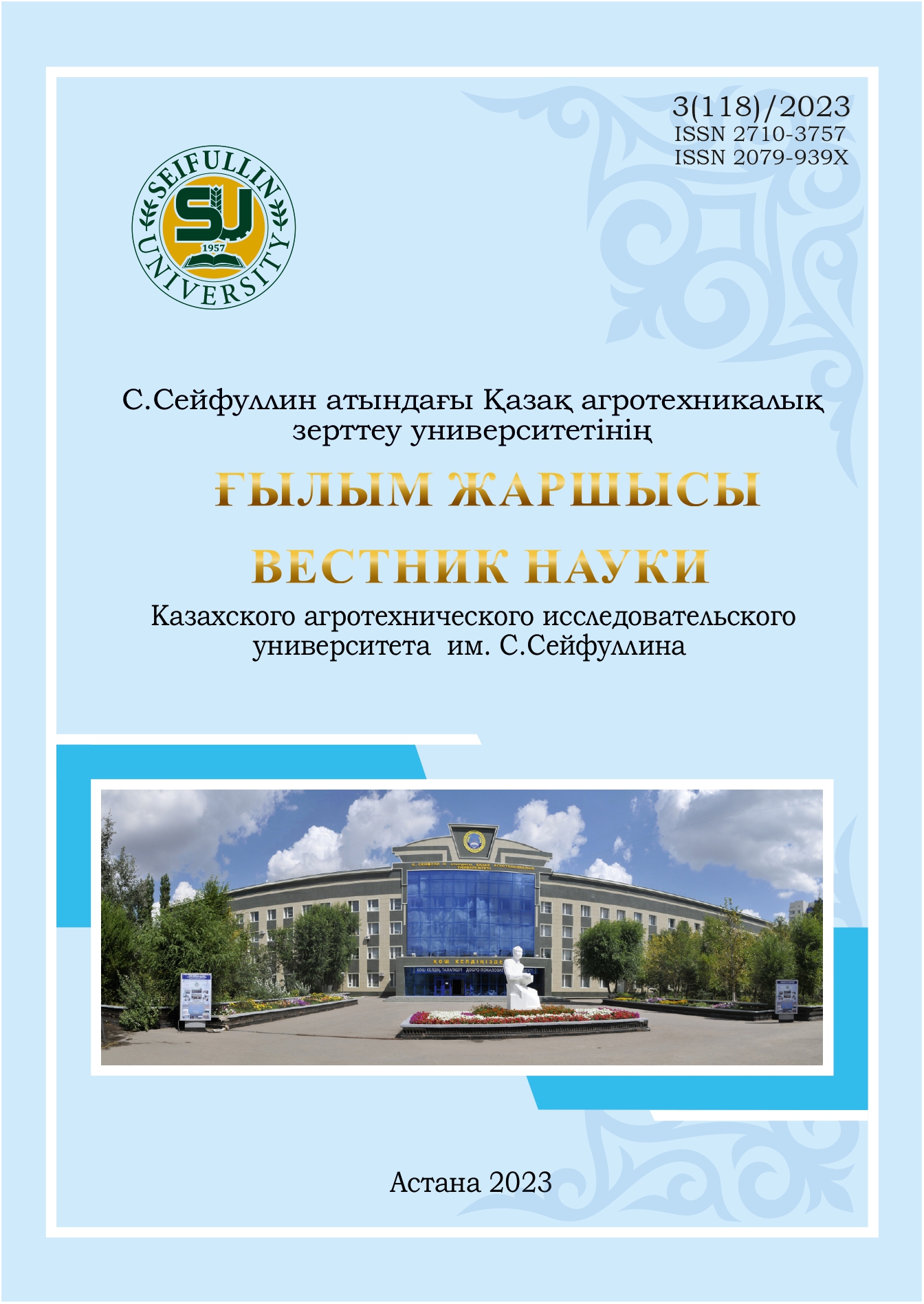PALYNOLOGICAL ANALYSIS OF HONEY WITH DETERMINATION OF POLLEN TYPES OF HONEY PLANTS IN DIFFERENT CLIMATIC ZONES OF KAZAKHSTAN
DOI:
https://doi.org/10.51452/kazatu.2023.3(118).1454Keywords:
palynological analysis; honey; pollen; flora specialization; flora migration; honey plants; honey beesAbstract
The article presents the results of a palynological analysis to determine the composition of honey, on the basis of which the types of honey-bearing plants that participated in the honey collection were determined. The variety and quantity of honey crops in the honey composition depends on the collected pollen, the ability of bees to flora migration and flora specialization. Pollen analysis of honey is the first method used to study the quality of honey.
According to the results of the palynological analysis of the sample of the IE "Koroleva Sot", types of pollen of honey plants were found – Psoraleadrupacea (Psoraleadrupacea) – 37.3%; Sophora (Sophorasp.) – 16.9%. Also, the proportion of pollen from non–nectar plants – Zveroboi (Hypericum sp.) - 2.2%. According to the botanical origins of the studied sample, the "Koroleva Sot" is an exact honey. The dominant pollen types of honey plants were found in IЕ"Glotova" – Derbennica(Lythrum sp.) – 69.1%; Caragana (Caragana sp.) – 9.2%; willow (Echium vulgare) - 9.2%. Also, the proportion of pollen from non–nectar plants is sem. Haze (Chenopodiaceae)-1,5. According to the botanical origins of the studied sample, IE "Glotova" is caragana honey. IE "Mayer" obtained the following types of honey plants - caragana (Caragana sp.) – 20.1%; Apple trees (Malus sp.) – 19.4%. Non-nectar plants- Potentilla (Potentilla sp.) -12,4. According to the results of the palynological analysis, it can be concluded that by studying the qualitative composition, it will be possible to establish the share of participation of honey plants.
As a result of the conducted research, it was established that honey samples are natural quality products that meet regulatory requirements. The results obtained provide the most information about the botanical source: according to the predominant and single pollen, a list of the main and accompanying honey plants from which honey is collected is compiled. This feature also allows you to identify the geographical origin of honey. Conducting a palynological analysis of honey samples from different climatic zones of Kazakhstan is the main purpose of this study

